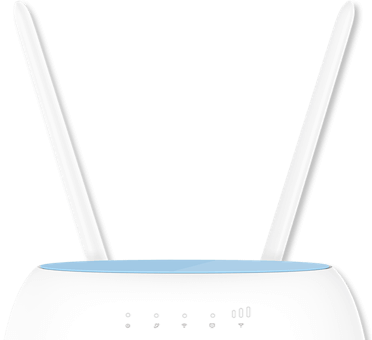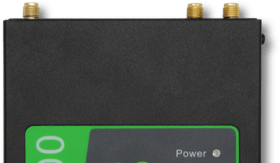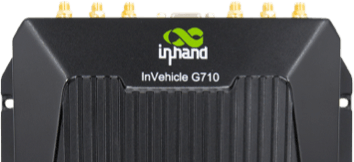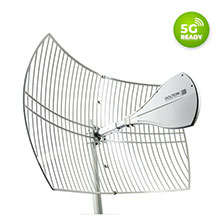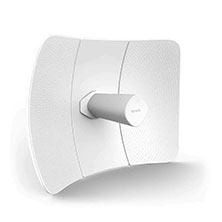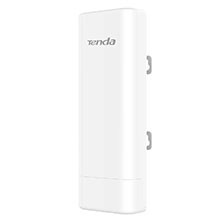Best WiFi Antennas

WiFi Antennas Explained
Antennas are critical for wireless local area networks (WLAN). They facilitate the wireless signal we use to browse the web, stream movies, work from home, and play video games. In addition, they also play a role in signal strength and range.
If you’re looking to improve your signal, replace your WiFi antennas, or create a long-range wireless network, choosing the right antenna is a critical step.
Installers and Integrators
Take advantage of our system design and installation services. Learn more or call us for a free consultation: 1-800-969-8189
How Do WiFi Antennas Work?
Wireless devices use radio waves to wirelessly communicate with each other. These wireless signals are simply electromagnetic waves (EM waves) containing packets of information. WiFi antennas convert the EM waves into electrical signals, and vice versa.
Wireless networking devices, such as wireless routers, smartphones, laptops, tablets, and hotspots, have receiving and transmitting antennas. The receiving antennas pick up on the EM waves containing packets of information and change them into electrical signals for the device to process. However, the transmitting antennas convert electrical signals into EM waves to transmit the information packets.
Types of WiFi Antennas
There are two main types of WiFi antennas – omnidirectional and directional.
Omnidirectional antennas
radiate a signal at a 360-degree angle to deliver the widest signal coverage. Think of an omnidirectional antenna as an un-shaped incandescent lightbulb. When the lightbulb is on, it will evenly distribute light in every direction to illuminate an entire room. Such as the antennas in the Tenda RX9 Pro.
Typically, an omnidirectional antenna’s range is much shorter than a directional antenna, but their coverage area is much larger. In other words, the lightbulb's light won’t extend as far as it would with a directional antenna, but it can illuminate an entire room. Omni antennas can be found indoors and outdoors.
Types of Omnidirectional WiFi antennas:
- Outdoor Omni Antennas: Used to improve WiFi signal outdoors. To successfully improve the wireless coverage outside, they are typically connected to a router, access point, or an outdoor access point.
- Ceiling Dome Antennas: Connect to a WiFi router or access point via coaxial cable and are installed on the ceiling of a home, office building, or warehouse.
- Rubber Duck Antennas or Dipole Antennas: Typically found on routers, access points, and WiFi USB adapters. Have a look the antennas on the Tenda Wi-Fi 4G+ LTE AC1200 Dual-Band Router
Directional antennas
as their name suggests, focus all their power in one direction. A directional antenna works similarly to a flashlight. When you turn on a flashlight, it illuminates the area that the light is being shined on. The flashlight's beamwidth (radiation pattern) is triangular shaped, anything outside of that triangle does not receive an ounce of light.
Since the antenna’s power is more focused, they can send and receive a wireless signal from a further distance, but with a much smaller coverage area. In other words, the light can reach beyond one room, but it won’t illuminate a whole room. Directional WiFi antennas are often used for long-range point-to-point WiFi networks to bridge the internet connection between two buildings. Or they can be used for long-range point-to-multipoint WiFi networks where more than one directional antenna connects with an omnidirectional antenna.
Types of Directional WiFi antennas:
- Yagi Antennas: The most popular directional antenna. Most Yagi antennas are shaped like arrows. To work, they must point in the direction they are sending a signal to or receiving a signal from. A typical Yagi antenna has a radiation pattern of 45 degrees.
- Mini Panel Antennas: Low-profile antennas designed to send radio waves to and from a specific area. These antennas are most commonly used to improve your WiFi signal indoors. They could replace a rubber duck antenna on a router, access point, or WiFi USB adapter. To drop connectivity issues, the antenna must point in the direction where you want to send a signal to and receive a signal from. These types of antennas have a radiation pattern of 60 degrees.
- Panel Antennas: Strong antennas that can be used to send or receive a signal from far distances. They can either be connected to a router to transmit data further or to a USB WiFi adapter to receive data from further distances. Panel antennas are more directional than mini panel antennas; they have a radiation pattern of 35 degrees. For example, the Tenda 5GHZ 16dBi 11ac Outdoor CPE antennas can be either panel or parabolic.
- Parabolic Grid Antenna: These antennas have ultra-high gain and are extremely directional. They tend to have a very narrow beamwidth, usually between 3-20 degrees. Because of this, parabolic antennas are able to send and receive signals from miles away, making them perfect for point-to-point WiFi networks. Plus, due to their design, they can withstand extreme weather conditions.
- CPE antennas: “CPE” antennas stand for “Customer Premise Equipment” antennas, and can be either panel or parabolic. They are used to create point to point networks and broadcast your wireless signal over a distance. The CPE antennae’s that we offer cover 12 miles and 6.5 miles respectively. CPE antennas can be deployed both indoors and outdoors to create a reliable WiFi connection in outlying buildings such as barns, rural areas and surveillance cameras. Check out the Tenda 5GHz 23dBi 11ac Outdoor CPE
Which WiFi Antenna is Best For…?
Improving WiFi Signal in a Home
Routers often aren’t very pretty, so most people tend to hide them behind furniture, inside a drawer, or put the router in a corner where it's out of the way. These are not the best locations for a router because they will get in the way of the wireless signal. Moving the router to a central location in your home is the first step in improving your home network.
If you are still finding weak spots and dead zones in some areas of your home, or you can’t move the router, you may have other options. For example, as long as your router has detachable antennas, you could swop them out for other antennas to improve your coverage. If you are using a wireless gateway (a router-modem combo device) that doesn't have detachable antennas, you can use an ethernet cord to connect the gateway to a wireless router that does have detachable antennas (added wireless gateway configuration will be needed).
By default, routers use small omnidirectional rubber duck antennas. Sometimes, these antennas are not strong enough to cover an entire house, especially if they are being blocked by furniture. To expand the signal, you could switch out the default antennas for stronger ones. But you are not bound to only use omnidirectional antennas on a router. If you want to improve your wireless signal in a particular direction, you could replace one of the antennas with a directional mini panel antenna.
Improve WiFi Signal in an Office Building
Office buildings are much larger than houses, and sometimes there are a lot more obstacles blocking the WiFi’s signal, stopping it from covering the entire building with a good connection. Similar to houses, you want the router to be placed in the best possible area, and if it has detachable antennas, you could replace the antennas to improve the coverage.
In an office building, there are usually computers, printers, laptops, and smartphones in every direction, so it's best to use omnidirectional antennas. Ceiling dome antennas can be used to improve the signal in large spaces (they also work in homes but tend to be less common). The dome antenna should be installed on the ceiling of the office building. After the installation, a long enough coaxial cable would need to be run through the building to connect it to the router or access point.
Improve WiFi Signal Outdoors
Usually, WiFi signals don’t reach outside because building materials and obstacles (walls, doors, and furniture) block or weaken the signal. To improve your WiFi signal outdoors, use an outdoor omnidirectional antenna to provide a reliable signal in every direction. They can either be connected to the router or directly to an outdoor access point, such as a WiFi range extender with a POE connector.
For outdoor purposes, it’s usually better to buy a low gain antenna for the best coverage. They have more of a round-shaped signal pattern, which will radiate the WiFi signal closer to the ground. A high gain antenna might stretch the signal out too far, causing the signal to be better further away and weaker within your backyard.
If the goal is to extend the signal even further, like to a field, use a directional antenna, and point it in that direction.
Long-Range Point to Point WiFi Networks
To bridge your internet connection with another building, two directional antennas are needed. The distance between the buildings will dictate which directional antennas you should use. For example, if the buildings are about a mile away from each other, a Yagi or panel antenna will work just fine, but if the buildings are much further apart, a grid antenna would be the best choice. For buildings 6 to 12 miles away you can use a strong panel antenna such as the Tenda 5GHZ 16dBi 11ac Outdoor CPE or the Tenda 5GHz 23dBi 11ac Outdoor CPE respectively.
Ideally, the antennas should be mounted on the roof of each building. During the installation process, it’s critical to point the antennas at each other and make sure they are aligned. Additionally, there must not be any obstructions between the two antennas, it’s important to have a clear line of sight.
Long-Range Point to Multipoint WiFi Networks
Point to multipoint networks wirelessly connect multiple buildings to a central location. To create such a network, you would need many directional antennas and one omnidirectional antenna.
College campuses are an example of point to multipoint networks. The omnidirectional antenna should be mounted on the roof of the central building to distribute the signal in all directions. Every other building will require you to mount a directional antenna on the roof and point it in the direction of the omnidirectional antenna. Like point-to-point networks, it's critical to have a clear line of sight between the omni antenna and the directional antennas.
Receive Better Long-Range WiFi
Sometimes people use WiFi USB adapters to receive a better WiFi signal. By default, the adapters use rubber duck antennas. Unfortunately, those antennas are not always the best at capturing long-range WiFi signals. If the adapter has a detachable antenna, you can replace it with a mini panel antenna, a regular panel antenna, or a Yagi antenna to capture a signal from further distances.
Recommended: Ultra High Gain Parabolic Antenna
The Long Ranger - Ultra High Gain Parabolic Antenna by Bolton Technical
- Perfect for long-range point-to-point and point-to-multipoint networks
- Can send and receive a wireless signal from 10+ miles away (under perfect conditions)
- Radiation pattern ranges between 4 to 20 degrees
- Provides up to +28 dB gain
- Sends and receives vertically or horizontally polarized sound waves.
- Designed to withstand extreme weather conditions
The Long Ranger is the most powerful directional cellular antenna in the market. It’s perfect for rural environments with faraway cell towers. When a standard Yagi can’t get the job done, this bad boy will.
This antenna features ultra-high gains of up to +28 dBi, making it extremely directional, which allows for farther reach. It has a radiation beam of about 10°. Thus, installation may take some time because it must be pointing at your closest cell tower with such accuracy for best results. Under perfect conditions, it can reach cell towers found 10+ miles away. That’s more than twice as far as a standard Yagi antenna.
The Tenda 5GHz 23dBi 11ac Outdoor CPE
- Incredible range up to 12.5 miles
- 23dBi vertically polarized antenna
- Wireless data rates up to 433Mbps
- Robust construction
- Simple and flexible installation
- Uses TD-MAX for greater performance
- Centralized management with CPE Assistant
The O8 5GHz 23dBi 11ac Outdoor CPE from Tenda is a high-gain vertically polarized directional antenna designed for long-range P2P and P2MP networking. It has a range of up to 12.5 miles, and +23dBi of gain depending on real world conditions. Extend your WiFi network to distant buildings like sheds, barns or even surveillance camaras. Pair it with another 08 CPE or a WISP station for stable WiFi signal wherever you need it. Snap-lock parts and three-axis alignment make this antenna easy to assemble and point for best performance.
Tenda 5GHZ 16dBi 11ac Outdoor CPE
- Incredible range up to 6 miles
- 16dBi dual polarized antenna
- Wireless data rates up to 450Mbps
- Robust construction
- Simple and flexible installation
- Uses TD-MAX for greater performance
- Centralized management with CPE Assistant
The 06 5GHz Outdoor CPE from Tenda is a very powerful panel antenna that can broadcast WiFi signal up to 6 miles depending on real world conditions. This high-gain dual-polarized directional antenna is designed for long-range P2P and P2MP networking. It allows you to extend your network or communicate with wireless ISPs found miles away. The high-quality waterproof design ensures great performance in any weather.
WiFi Antenna Frequencies, Wavelengths, and Range
As mentioned earlier, WiFi devices communicate with each other through radio waves. Similar to all waves, radio waves are measured in frequencies – the rate, typically Hertz (Hz) per second, at which data is sent and received within a specific interval.
Depending on the WiFi technology, WiFi antennas use several frequencies to send information: 900 MHz, 2.4 GHz, 3.6 GHz, 4.9 GHz, 5 GHz, 5.9 GHz, and 60 GHz. The most common frequencies used in WiFi communication are 2.4GHz and 5 GHz, which line up to wavelengths of 12.5cm and 6cm.
The lower the frequency waves, the longer the wavelengths. Since the wavelength is longer, WiFi antennas that use lower frequencies have an easier time going through obstacles like floors and walls. This allows them to send information further than higher, shorter wavelengths. The only problem here is that data is sent at a slower rate. Shorter wavelengths travel much faster, enabling high-speed data transfer. However, shorter waves have a harder time going through actual obstacles, which lessens the signal’s range.
Each WiFi antenna is built differently to match the frequency and wavelength of the signal that is being transmitted. In other words, a 2.4GHz WiFi antenna cannot replace a 5GHz antenna, and vice versa. Some WiFi antennas are built to use both frequencies (known as dual-band antennas). Depending on the antenna, they can run under one frequency at a time or both at the same time.
WiFi Antenna Polarization
Polarization depicts the orientation in which the wireless signal is being transmitted with respect to the ground.
EM waves propagate with linear, circular, or elliptical polarization. The most common polarization method used in WiFi communication is linear. Linear polarization can take two forms: vertical and horizontal.
- Horizontal Polarization- Radio waves that travel parallel to the ground.
- Vertical Polarization- Radio waves that travel perpendicular to the ground. WiFi antennas are almost always vertically polarized.
For the best signal possible, the polarization between antennas must match. If the radio wave's polarization does not perfectly match that of the WiFi antenna, there will be a decrease in signal. Additionally, the signal will be killed completely if the polarization of the WiFi antenna and the radio waves are opposite to each other. In other words, vertically polarized WiFi antennas cannot receive horizontally polarized waves, and vice versa. Some WiFi antennas use dual polarity to support more traffic. These antennas can send or receive horizontal and vertical radio waves at the same time.
Understanding WiFi Antenna Gain
Gain is a measurement used to stand for the antenna's strength and ability to direct electromagnetic waves in a specific direction. Antenna gain is measured in decibels (dB) over an isotope (dBi), compared to an isotropic antenna. An isotropic antenna has 0 gain or 0 dBi and sends and receives an equal amount of signal in every direction.
It might sound like antennas with higher dBi measurements are better because they are stronger and can reach further, but higher dBi doesn’t always mean better. As the antenna’s dBi increases, so does their range, but their coverage area decreases.
For example, think about an isotropic antenna as a symmetrical ball of playdoh. If you press down (add gain) on the ball, the sides will expand, and the more pressure you add to the ball, the flatter the ball becomes. Adding gain to the ball alters the beamwidth from a sphere to a pancake. As a result, the electromagnetic waves can reach much further but within a smaller coverage area.
Outdoor WiFi Antenna Installation Best Practices
Radio waves are easily weakened or blocked by a variety of obstacles. To get the best signal possible over a long distance, the antennas must be installed in the best way possible.
WiFi Antennas Must Have a Clear Line of Sight Outdoors antennas work best when their signal is not being blocked by trees and buildings. When installing long-range point-to-point or point-to-multipoint antennas, make sure their line of sight is not blocked by any obstacles. If you can't remove the obstacles, you can always install the higher so that the signal can be sent over the top of the obstacles.WiFi Antenna Alignment
To successfully share a long-range network, the antennas must be pointed at each other. For example, a point-to-point network requires there to be a directional antenna on each building. If antennas are pointing in the direction of each other, but one antenna was installed higher than the other, they won't be able to talk to each other.
WiFi Antenna Orientation
It's important to make sure that your antenna points at the base station. A base station can be either a directional or omnidirectional antenna that is the source of the wireless signal.
As mentioned earlier, most WiFi antennas are vertically polarized, meaning that vertically polarized outdoor antennas should be vertically aligned with each other to create a successful network. The antennas won’t be able to talk with each other if a directional antenna is horizontally orientated while the base antenna is vertically orientated.
Know How Much Gain You Really Need
If your goal is to send a signal over long distances, you will need antennas with higher gain. On the other hand, if you are trying to improve the signal in your backyard, a high-gain antenna is not always ideal. An outdoor high gain antenna might stretch the signal out too far, causing the signal to be better further away and weaker within your backyard.
Use the Shortest Cable Possible
Wireless signals can be lost across cables, so to protect as much of the signal, use the minimum cable length needed. If you happen to use a longer cable, do not wrap or coil the cable around anything.
Indoor WiFi Antenna Installation Best Practices
Indoor antennas work best when their signal is not being blocked by walls, metal, doors, floors, and furniture. To lessen interference and get the best signal strength and range, the antennas must be placed in the best possible spot. Ideally, the antennas should be put in a central area where they are clear from obstacles.
Also, where your router’s omni antennas face can also affect your signal. According to a former Apple WiFi engineer, your wireless signal is not at its best if the router’s antennas are straight up. You will probably get better speeds and coverage if one of the antennas is straight up and the other is horizontal. This way the router can successfully communicate with both types of linear polarities.
Contact Us
Signal Boosters is a leading provider of cell phone signal boosters for homes, vehicles, and commercial buildings. We specialize in consumer-friendly kits as well as customized RF systems for cellular, public safety two-way radio, DAS, and WiFi.We’re here to help with any issues you might be experiencing with poor cell service. Contact us today, or call us at 1-800-470-6777.
Interested in Learning More? Check Out Our Cellular Info Hub / WiFi Info Hub
Table of Contents

Recent Posts



